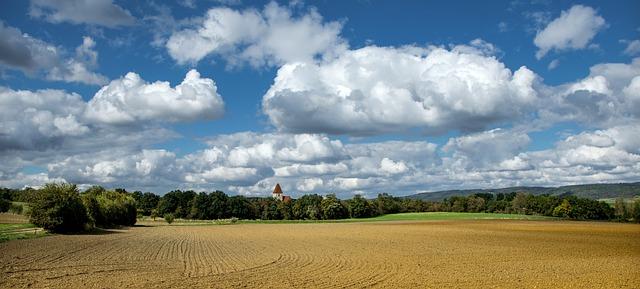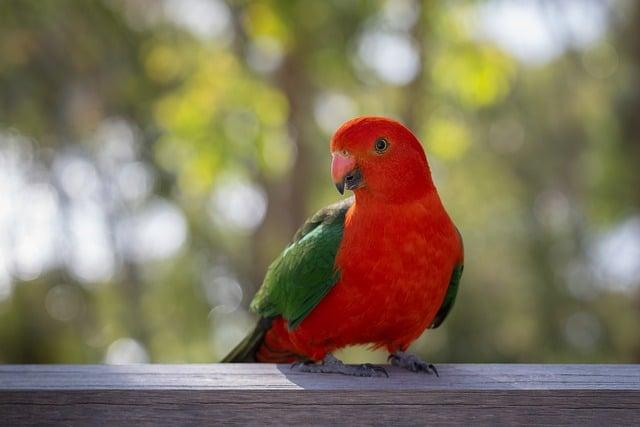- Introduction
- The Importance of Bush Heritage Australia
- Preserving Unique Ecosystems
- Restorative Conservation Methods
- How Communities Support Land Conservation
- Conclusion
- FAQs
- References
Introduction
Bush Heritage Australia is a non-profit organization dedicated to conserving Australian lands and preserving biodiversity through strategic land management. As the organization works on protecting millions of hectares of forests, grasslands, and wetlands, it provides vital habitats for native species and contributes to offsetting the impacts of climate change. In this article, we will explore the importance of Bush Heritage Australia's work, the unique ecosystems it protects, the methods it employs for restoration, and how communities can get involved in supporting these vital conservation efforts.
The Importance of Bush Heritage Australia

(Image: Pixabay/@LubosHouska)
Founded in 1991, Bush Heritage Australia plays a pivotal role in securing protection for critical landscapes across the country. The organization's mission is to safeguard land with high conservation value, preventing further degradation of endangered habitats and species. One of its key strategies involves purchasing and managing large tracts of private land, ensuring they are maintained with ecological integrity.
Australia's biodiversity is one of the richest in the world, yet it faces myriad threats. Deforestation, land resource extraction, agriculture expansion, and invasive species are just a few of the pressures that have put native flora and fauna at risk. Bush Heritage steps in to protect these fragile environments through sustainable land acquisition and ongoing stewardship programs.
The impact of Bush Heritage extends far beyond simple land ownership. By involving scientists, traditional landowners, and local communities in the process, they create sustainable systems that allow ecosystems to recover and thrive. Biodiversity doesn't just mean protecting individual animals or plants; it means maintaining complex webs of life where all species benefit from the healthy coexistence of different ecosystems.
The organization now manages over 11 million hectares nationwide in more than 30 reserves, catering to hundreds of species of plants, mammals, and birds—some of which exist nowhere else on Earth. This transformative work preserves Australia's natural legacy, ensuring future generations continue to experience its unique wilderness.
Preserving Unique Ecosystems

(Image: Pixabay/@pen_ash)
Australia is home to some of the world's most distinctive ecosystems, ranging from tropical rainforests to arid deserts, all rich in biodiversity. However, many of these habitats are critically endangered due to historical land misuse, habitat fragmentation, and changing climate conditions.
Among these ecosystems are the Gondwanan rainforests, old-growth woodlands, native grasslands, alpine environments, and dry sclerophyll forests. Bush Heritage focuses on protecting these unique ecosystems through carefully crafted site-specific action plans tailored to address the unique challenges each landscape faces. For instance, protecting a tropical rainforest may involve targeting invasive species encroachment, while a desert ecosystem might focus on the conservation of rare water sources.
Within these distinct ecosystems, keystone species—native species crucial to the stability of surrounding life—are often monitored and nurtured. These keystone species range from iconic marsupials like the Northern Quoll, to less-known yet ecologically essential plants. The conservation of such species often has a cascading positive effect on entire ecological systems.
The uniqueness of Australian wildlife lies not only in its beauty but also in its fragility. Many of Australia's plant and animal species evolved exclusively on the continent, leading to isolation-dependent ecosystems that react poorly to disruption. That is why the ecosystems preserved by Bush Heritage represent a living laboratory of biodiversity, helping to regenerate a threatened natural history while providing invaluable data to the global scientific community.
Restorative Conservation Methods

(Image: Pixabay/@Megan_Rexazin_Conde)
A core philosophy of Bush Heritage Australia's approach to land conservation focuses on restoring damaged ecosystems to their original function and health. This is achieved through a combination of hands-on physical restoration efforts and long-term ecological monitoring programs.
Restoration typically begins with removing human impacts on the landscape, such as clearing invasive weeds, providing animal-friendly fencing, and limiting unsustainable practices such as overgrazing. Subsequent actions include reintroducing native species, rehabilitating soil, rebuilding riparian areas, and encouraging natural recovery processes.
One remarkably successful example of their work is in the Charles Darwin Reserve, where large portions of degraded land were brought back to life through controlled burns and the strategic introduction of native grasses. Such efforts have restored native vegetation and biodiversity, attracting birds, bats, and small mammals rarely seen before the intervention.
Another land stewardship technique employed by Bush Heritage includes the careful use of Indigenous land management knowledge. Aboriginal people have successfully managed the Australian landscape for tens of thousands of years. Their land-care strategies, such as "cool burning" techniques passed down generations, are applied to help maintain balance in fire-prone areas.
By collaborating with Indigenous partners and modern scientists, Bush Heritage achieves meaningful baseline biodiversity increases within protected areas. It's not just about planting trees or protecting single species; it's about healing entire ecosystems and finding sustainable ways to enhance resilience against future environmental threats like climate change.
How Communities Support Land Conservation

(Image: Pixabay/@chaiyananuwatmongkolchai)
A significant part of Bush Heritage Australia's success stems from the active involvement of volunteers, donors, research partners, and local stakeholders. Community support is fundamental to achieving long-lasting conservation outcomes—from fundraising campaigns to on-ground volunteer work in reserves.
Volunteers play a huge role in tasks such as tree planting, invasive species control, wildlife surveys, and data collection. The practical work done by these volunteers not only reduces costs for the organization but also creates an engaged community that feels a deep connection to the land they are helping to protect.
Financial donations, large and small, enable Bush Heritage to expand its reserve network, purchase critical ecosystems, and support ongoing operational expenses. Many supporters become members of Bush Heritage's "Guardians," helping fund essential conservation work and ensuring long-term sustainability.
Additionally, partnerships with academic institutions and research organizations help build a foundation of scientific knowledge that informs the organization's tactics. These collaborative relationships generate new conservation techniques and technologies that can be replicated across other reserves globally. Incorporating diverse expertise guarantees continuous innovation in protecting Australia’s environment.
Conclusion
Bush Heritage Australia's continued efforts in conserving vital ecosystems, restoring degraded lands, and engaging with communities have made a substantial difference in preserving Australia's unique biodiversity. While the threats facing Australia’s environment are still enormous, organizations like Bush Heritage provide a pathway to restore balance and ensure resilient habitats for future generations.
The organization's success is a strong testament to the power of cross-sector collaboration, including individuals, researchers, Indigenous peoples, and local communities, all working towards a common goal: protecting the wonders of the Australian wilderness. Together through education, strategic land management, and active participation, we can promote the coexistence of nature and humanity.
FAQs
What is Bush Heritage Australia's main goal?
Bush Heritage Australia's primary goal is to conserve Australia's biodiversity by acquiring and managing land, protecting it from threats, and implementing restoration practices to rehabilitate damaged ecosystems.
Can I visit Bush Heritage reserves?
Yes, several Bush Heritage reserves offer ecotourism opportunities, where visitors can experience nature sustainably. However, some reserves may have restricted access due to sensitive habitat management activities or ongoing restoration projects.
How can I contribute to Bush Heritage Australia?
You can donate financially, volunteer your time, or participate in citizen science projects to help collect data necessary for conservation efforts. Many people also choose to become members of Bush Heritage's Guardians program, providing ongoing financial support for long-term initiatives.
How does Bush Heritage collaborate with Indigenous communities?
Bush Heritage works closely with Traditional Owners, acknowledging and incorporating ancient land management techniques such as Indigenous fire practices, into their conservation strategies. Collaboration ensures both ecological outcomes and respect for cultural heritage.

